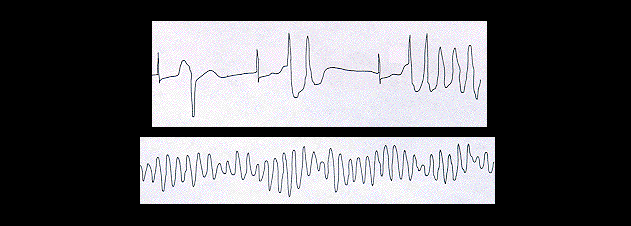Thus far, we have shown examples of ventricular tachycardia in which the QRS morphology has been uniform, or monomorphic. Ventricular tachycardia may also be polymorphic. One form of polymorphic ventricular tachycardia is referred to as “Torsade de Pointes” because of its characteristic wave form which resembles a corkscrew. An example of this arrhythmic was shown in chapter 5 and is shown again here.

As discussed earlier, this type of ventricular tachycardia characteristically occurs in patients in whom the QT interval on the ECG is prolonged, either because of congenital abnormalities involving the sodium and potassium channels, or because of exposure to an ever increasing list of drugs, most notably the class 1a and class 3 antiarrhythmic drugs. Hypopotassemia, and severe bradycardia can also lengthen the QT interval and are risk factors for the development of torsade. The ECG shown here is from a patient who was receiving quinidine, a type 1a antiarrhythmic drug.
